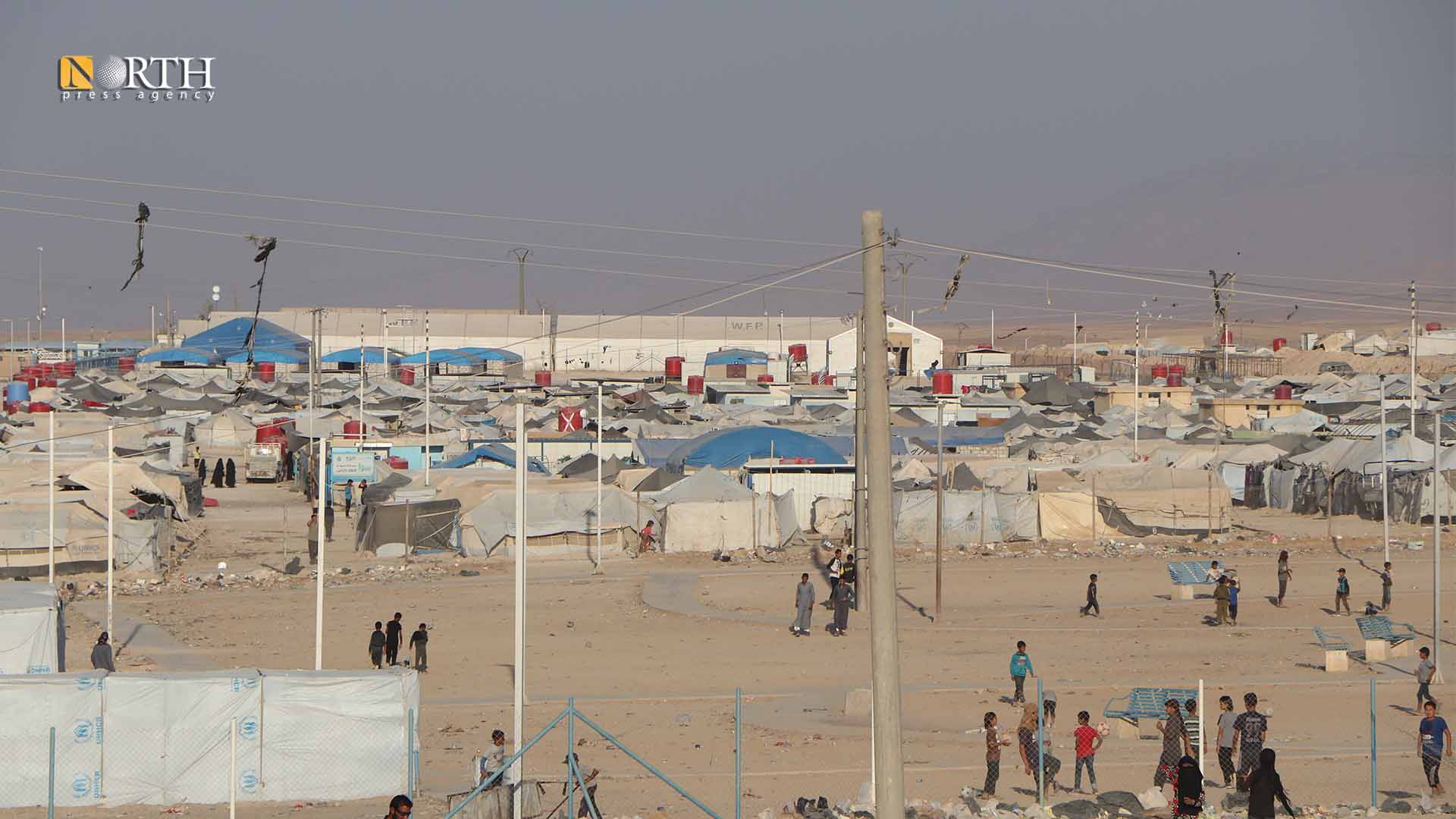Killings escalate in Syria’s Hawl Camp with no international solutions in sight
HASAKAH, Syria (North Press) – The murders that take place in northeast Syria’s Hawl Camp in the second quarter of 2021 have become an almost daily occurrence in the camp, which is the biggest camp in the northeastern Syria.
The camp, which houses around 60,000 people from 50 nationalities east of Hasakah, has recorded 20 killings of Syrians and Iraqis in the camp since mid-April.
Last Thursday, the security forces found the bodies of two Iraqi refugees who were killed in two separate incidents in the camp.
20 victims
The number of killings in the camp over the past two months has reached about 20, after the security operation carried out by the Internal Security Forces (Asayish) and units of the Syrian Democratic Forces (SDF) at dawn on March 28th, in search of wanted persons and perpetrators of the murders in Hawl Camp, a military source told North Press.
The Asayish also recorded ten attempted murders, including the stabbing and beating of 36-year-old Russian refugee Elena Alexander, who is from the families of the militants of the Islamic State (ISIS) and has four children, was stabbed and beaten with sharp objects in the camp.
The source, speaking on condition of anonymity, added that the vast majority of these killings were from the middle of last month until late July, and were carried out with firearms.
The population of Hawl Camp includes 6,155 Syrian families, with a total of 20,217 people, and 8,284 Iraqi families, with a total of 30,706 people, according to the camp’s administration.
The number of foreign ISIS families is 2,625, for a total of 8,965 people.
Many Syrians left the camp in several waves after the Arab tribes in their home regions agreed to sponsor their return.
Hawl Camp consists of nine sections; eight of them are for Iraqi refugees and Syrian IDPs, and the other is for ISIS families.
With many countries ignoring the repatriation of their nationals from the families of ISIS militants, it does not seem that there are solutions in sight to put an end to the crimes that began to increase dramatically three months ago.
Since early 2021, ISIS sleeper cells have killed 47 individuals inside the camp, 12 of which occurred during the first week of the year, in a toll considered the largest ever in the camp’s history.
Men, women, and children were among the victims of the murders, which were committed with guns, hand grenades, sharp objects, and even fires.
Security measures and campaigns
On March 28, the Asayish, supported by units of the SDF, launched a security operation under the name ‘Humanity and Security Campaign’ in search of wanted persons, perpetrators of the murders, and ISIS members who had infiltrated the civilian populace during battle of Baghouz in March 2019, which was the final battle against ISIS in Syria.
On April 2, the Asayish announced the end of the first phase of its campaign in the camp, leaving the door open for other stages to control matters in the camp, which has been described as “the most dangerous place in the world.”
125 members of ISIS sleeper cells were arrested, 20 of whom are responsible for the cells and assassinations that took place in the camp, and military supplies and electronic circuits used in preparing explosive devices were found, according to the statement.
However, the Asayish indicated in its statement at the time that the danger in Hawl Camp has not yet subsided, and will continue as long as the situation of the camp remains the same. It called on the international community to help find appropriate solutions by repatriating the camp’s international residents back to their home countries.
Despite all the security measures in the camp, ISIS cells still possess the power and planning to carry out murders inside the camp, which is evident in the increase in killings and the transformation of their tools from stabbing and arson to the use of firearms.
No international response
In late June, a statement issued by the Rome meeting of the Global Coalition to Defeat ISIS stated that foreign ministers were committed to “pursuing existing effective justice and accountability mechanisms” in close coordination with the countries of origin, without any reference to an agreement on the return of subjects to their states.
Prior to the meeting, Commander-in-Chief of the Syrian Democratic Forces Mazloum Abdi addressed the foreign ministers meeting on the sidelines of the G7 meeting in Rome, saying: “To ensure a sustainable victory, we must not forget that tens of thousands of women, children, and ISIS fighters are still in camps and custody centers in northeast Syria.”
Although the United States seeks to persuade countries to take back their citizens, rehabilitate them, and even prosecute them, some of those participating in the Coalition have reservations about returning their citizens.
AFP quoted the US Secretary of State as saying during the meeting: “This situation is intolerable and cannot continue indefinitely.”
On March 23, the SDF called on regional and international powers to bear their responsibilities in solving the issue of ISIS detainees and their families through supporting the AANES at various securities, political, economic and reconstruction levels.
“The health and security situation in the camps harms the physical and mental health of detainees there and puts their lives at risk, especially children,” the statement noted.

